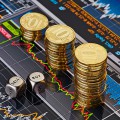 Financial analysts are finding themselves bullish on the U.S. economy once more following a multi-year decline. The signs of more than mere recovery became evident when the S&P 500 hit the record-breaking 2,000 mark on Aug. 25.
Financial analysts are finding themselves bullish on the U.S. economy once more following a multi-year decline. The signs of more than mere recovery became evident when the S&P 500 hit the record-breaking 2,000 mark on Aug. 25.
While it failed to close at that level, the performance still broke a record with a closing logged at 1997.94. The achievement is largely credited to biotech stocks and financials.
Some say the significance of the milestone lies mostly in the psychological arena, it does represent a high in a nearly six-year rally that has helped with the recovery of retirement accounts negatively impacted during the financial crisis. The S&P 500 has almost tripled from its 2009 low struck during the height of that crisis.
The index’s rise comes despite both domestic and international turbulence that would generally signal caution to investors. The Federal Reserve has announced a reduction in stimulus funding for the economy and ongoing world crisis, such as the conflict between Russia and Ukraine, could have tugged the index down, but they have not.
In addition, recent reports put both the housing market and the U.S. services sector below projections. Even so, the U.S. economy remained on a strong growth trajectory.
Biotech stocks and financial shares are both credited with driving the record-breaking close. Biotech stocks have been outperforming as of late, with the Nasdaq Biotech index riding about 8.6 percent for the month. Financial shares are also strong with Morgan Stanley and Goldman Sachs both seeing generous gains.
The recent gains in U.S. stocks have well outpaced those in other world stock markets. In fact, they’ve made U.S. stocks one of the top investments in 2014, even outpacing bonds and gold.
While analysts predicted a rise to 2,000 by the end of the year, the high-mark came much earlier than expected. That, analysts say, is due in part to a Federal Reserve policy of adding liquidity in to the market via its bond-purchase program. This has helped maintain low interest rates over the past few years.
Even though the Fed intends to wind down its liquidity program, many believe the market will remain strong and the rally will continue for some time bolstered by economic growth and increased activity in the housing market.
Steven Einhorn, vice chair of Omega, a hedge fund with about $10.5 billion in managed assets, predicted the rise to 2,000. “I continue to think this bull market has several years to go,” he told Reuters, indicating his belief the rally isn’t a passing anomaly.





